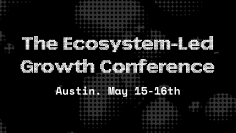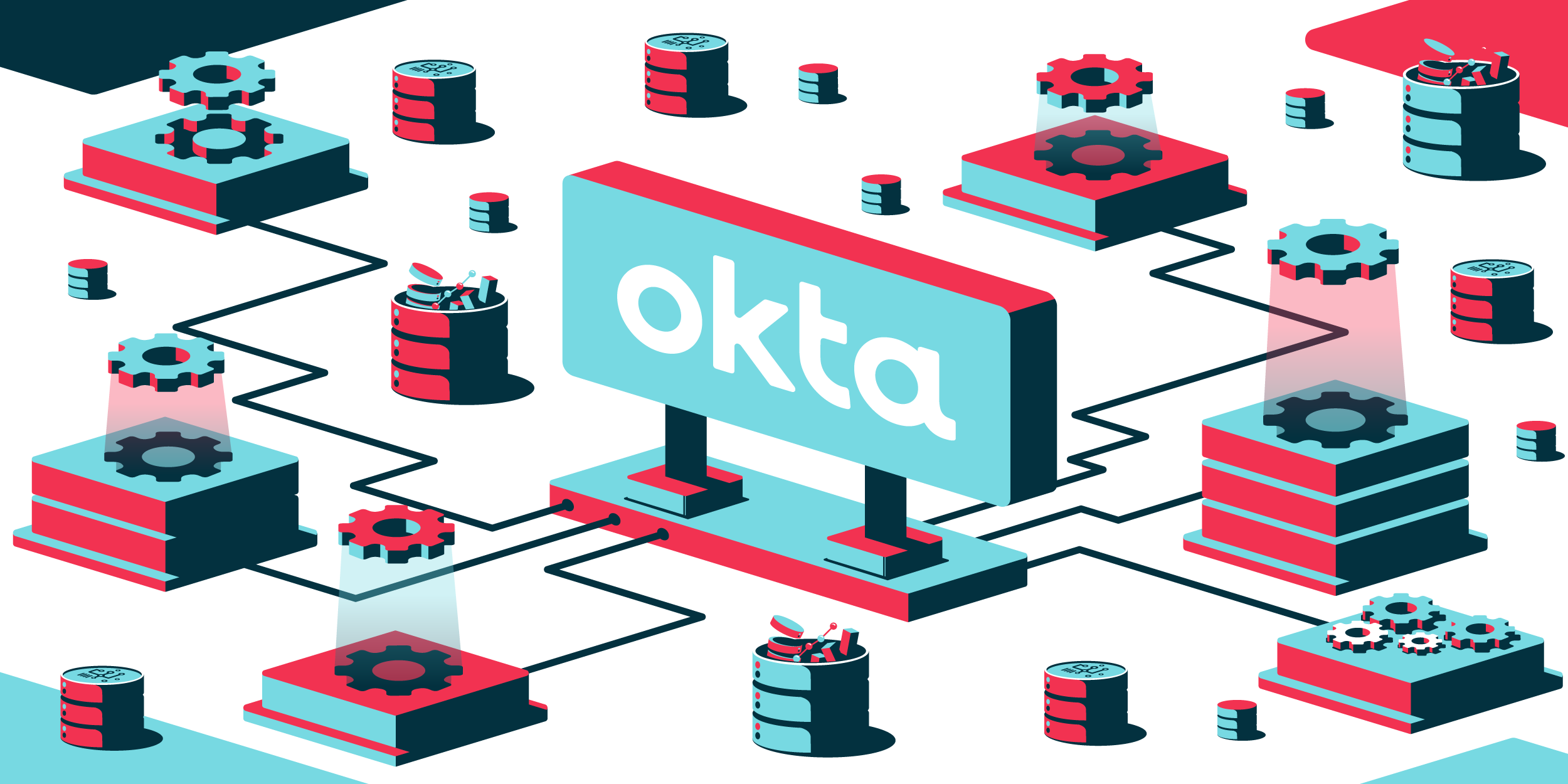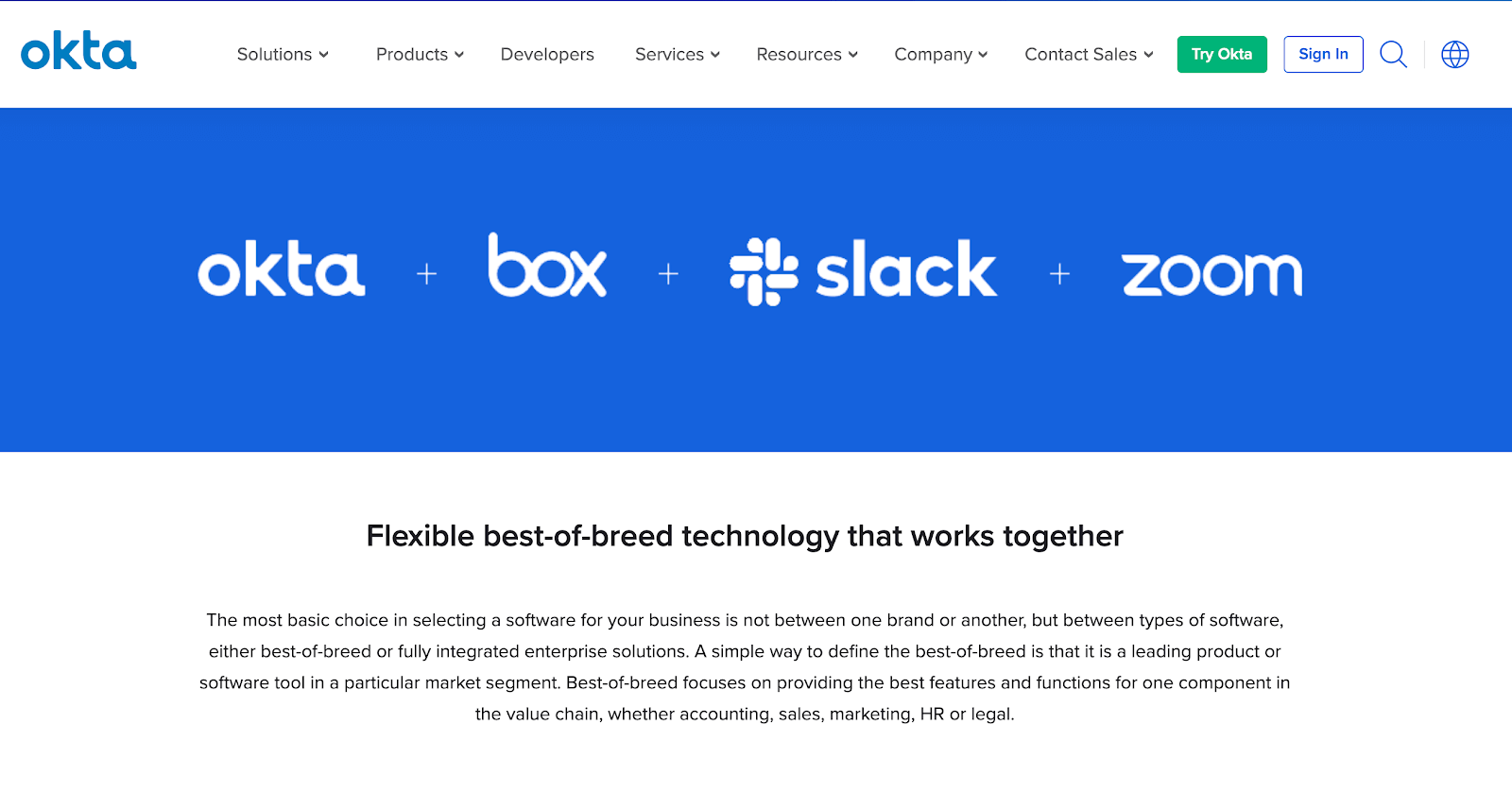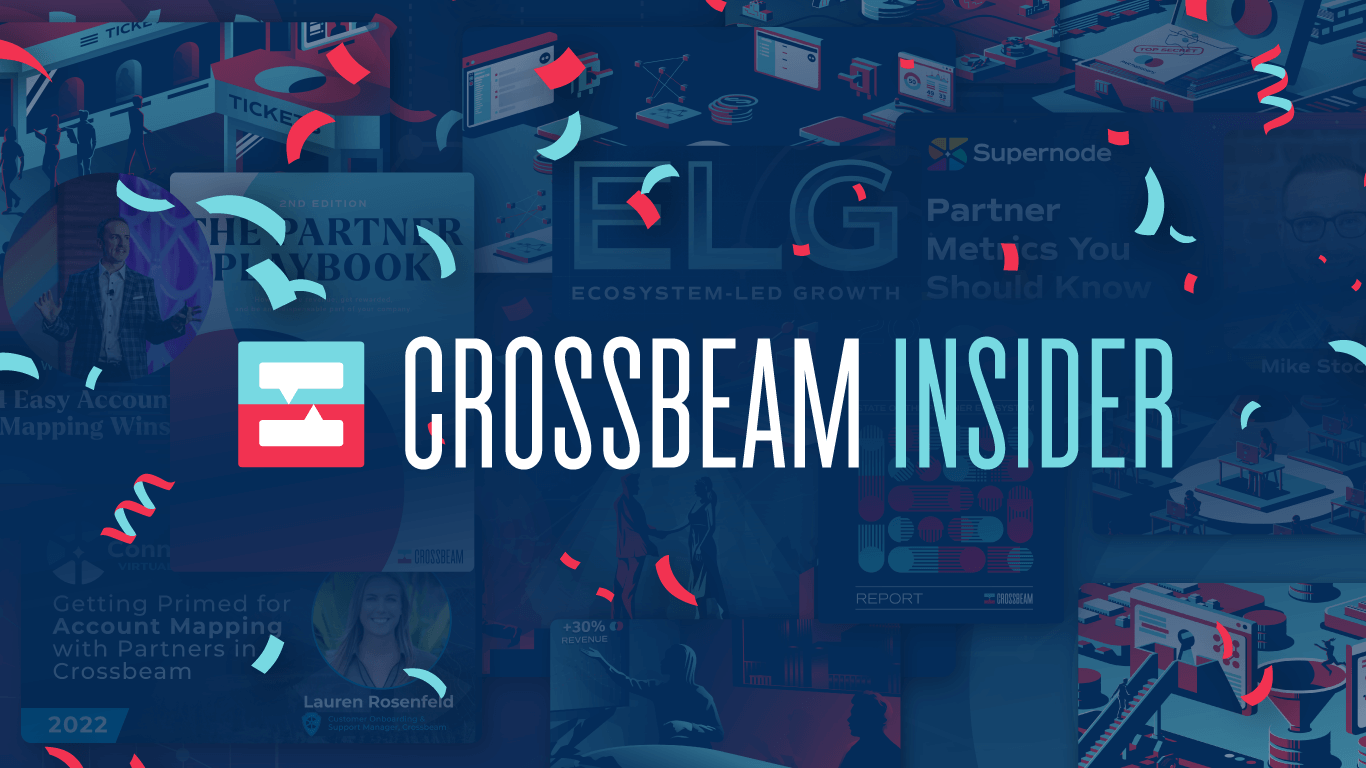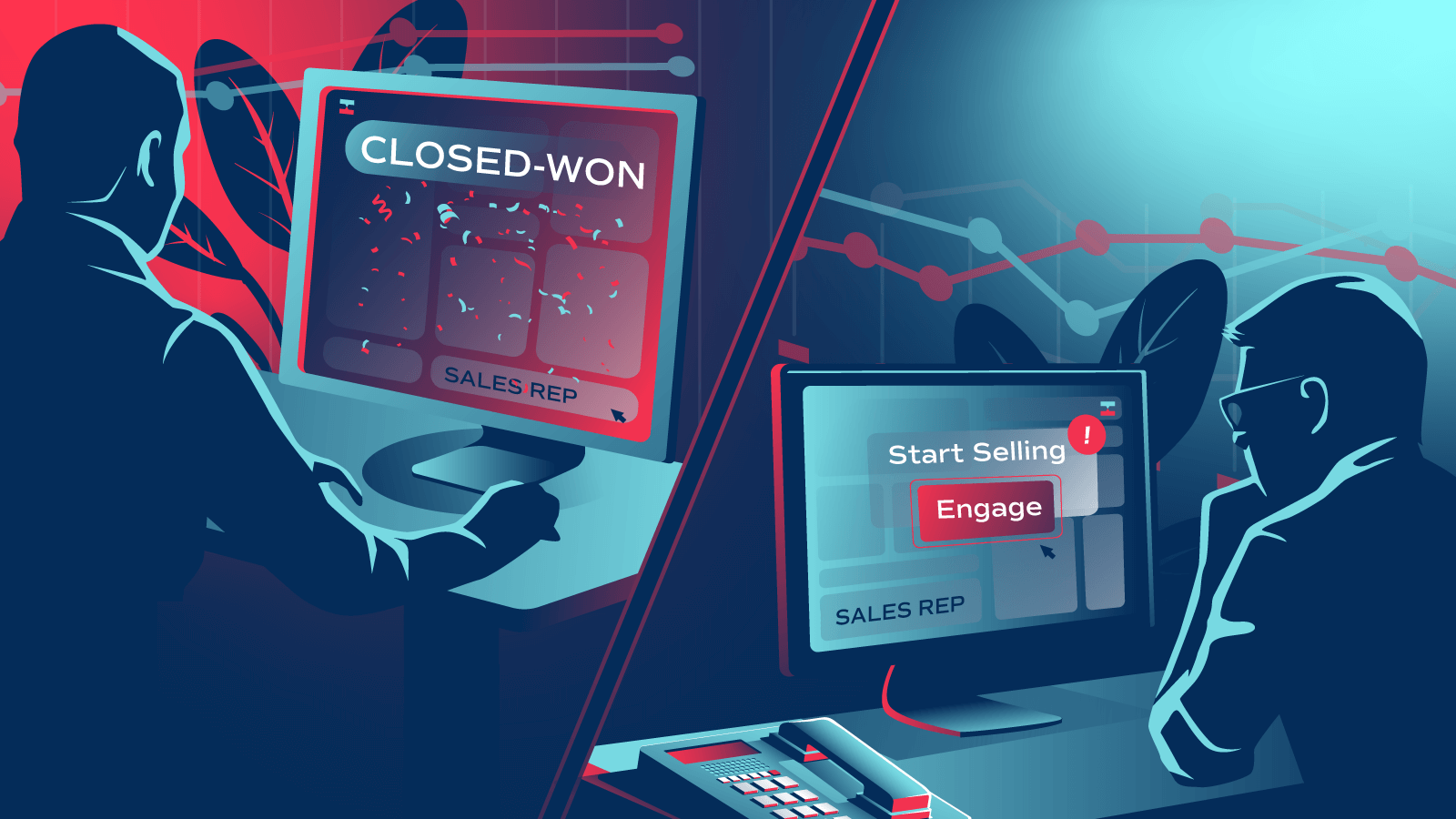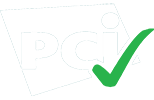Is there any SaaS company more poised for the Era of the Ecosystem than Okta?
 The identity cloud provider offers services like Single Sign On (SSO) and other identity management to companies, allowing for IT departments everywhere to closely manage the ever-growing list of tools used for the modern business workflow.
The identity cloud provider offers services like Single Sign On (SSO) and other identity management to companies, allowing for IT departments everywhere to closely manage the ever-growing list of tools used for the modern business workflow.
As a result, Okta is like the popular kid at your high school: friends with everyone. After all, Okta is at its most useful when integrated with another tool.
That’s why we sat down with Okta’s VP of Technology Partnerships Maureen Little. At a business built on technology integrations, her team is the one responsible for growing this ecosystem — making her a useful resource for knowing how to focus your partnership efforts.
Interview edited for length and clarity.
–
Okta could conceivably partner with any SaaS company. How do you choose?
Okta is an integration company. Our mission is to enable any organization to use any technology so we have a large ecosystem of integrations and you’re right — we could “partner” with anyone. But when we outline strategic technology partners, we focus on three things:
- Does the integration extend our product? Does the partner and it’s integration help us extend our product and add new features for our customers?
- Does it help us sell? Partnerships are not a cost center. We need to make sure it helps sell Okta. It usually helps our customer who is overwhelmed with all of the software they have to buy.
- Does it “change the game”? Where do we believe our industry is heading? Where will future threats come from? How can we strike unique commercial and technical partnerships that bring massive value to our customers or how can a partnership take us into new markets? It’s a unicorns-riding-on-rainbows kind of thing. These are the fun ones.
Oh, tell me more about these.
We work closely with our product, tech strategy, and corporate strategy teams to ideate partnership thesis documents. In these, we mock up what we call the “North Star.” Everyone on the team has a standard deck they leverage and the first question is “How does this benefit the customer?” Followed by: “What does the integration look like? What does the go-to-market look like?” Only then are they allowed to share how it benefits Okta.
Those must be fun to read.
So fun!
Pretend you and I agree in principle to an integration. What happens next?
Once integration is approved and we have a date for launch, we begin to work on the customer messaging and GTM plans. We have a handful of partnership motions that are proven. Oftentimes that’s as simple as “better together” messaging. It’s the “why” story that aligns with our solution-selling process.
We take this messaging and new marketing materials to our sales enablement team, our channel team, and include it in any appropriate external marketing. It just requires a really good writer to put something together at how our customers are better served.
Where possible, we also work on technical documents and visuals for partnerships that are more complex. (Example below)
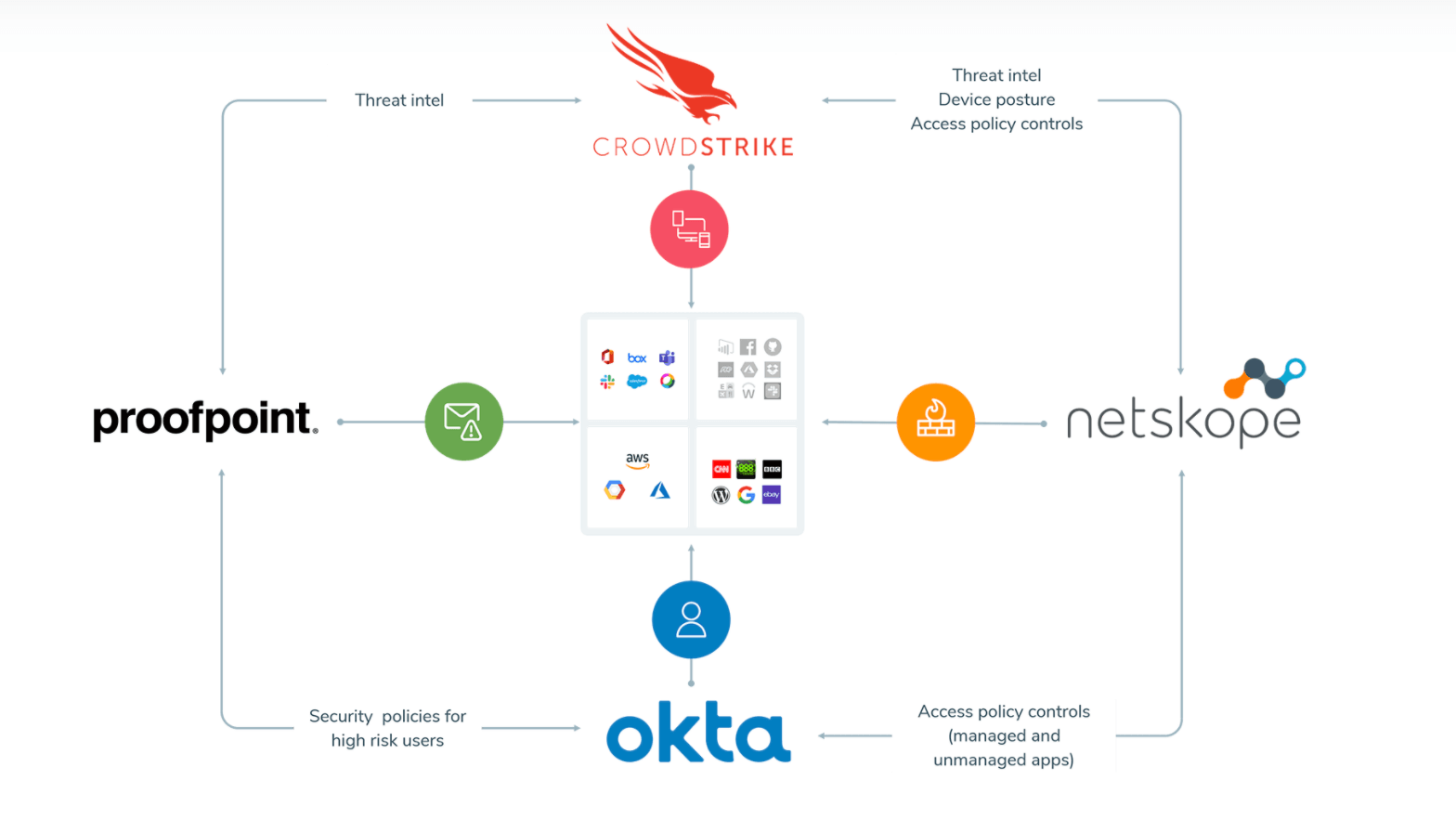
The next phase is selected from a menu of traditional partnership motions. Things like a joint webinar, account mapping, referral programs, and large events.
Is there a partner motion Okta uses that’s particularly creative?
We are starting to lean on go-to-market plans that change depending on the vertical of the partner. For example, we launched our Spectra Alliance this year in response to COVID-19. Companies around the world had to transition entire workforces to remote work. Though this was a trend we were seeing at Okta, it happened faster than anyone expected. We listened to the questions and concerns coming from our customers about how to implement “Zero Trust” strategies quickly. It was a true “Better Together” solution.
As you can see from the Spectra Alliance, we don’t always assume it’s only two companies in a partnership. As long as we’re not competing, we may find that co-marketing, account mapping, referral programs work well with non-standard partners. We do a lot in the productivity space with Box, Zoom, and Slack. We don’t compete, and our story is critical as companies try to engage with their employees.
Do you have any advice for someone that is trying to figure out where to focus their efforts?
Be clear on what your dream partnership is very early, and create the processes that stem from there. We made a grid of some criteria and then took companies and plotted them. Some of those criteria include:
- Does a joint solution bring massive value to Okta’s customers?
- How much in ARR can this drive for Okta?
- Do they sell to the same buyer?
- Do they sell through the channel?
- Do they implement through SI?
- What is the value to the partner? How does Okta help them?
That helped us focus and use our resources wisely.
How did you message this internally?
First of all, we did a roadshow to our executive team and core departments within Okta to gather feedback on our strategy and our first set of focus partners. We have a wiki page and have all strategy documents available for anyone to view across the company.
As far as documentation, you need long and short format for everything. Product teams like visuals, short and snappy. Executives want to read a two-pager and care most about the bottom line. So we do both. We made sure each one of these has standard elements like executive summaries, customer benefits, forecasted revenue impact, and impact of core metrics.
Templates like these have been massively helpful.
What do you think makes for a successful partner program?
In strategic partnerships, you need a big opportunity. Because partnerships are not about you, they are about adding value to another company.
Okta thinks of identity as the baseline for all digital products, and every company is going digital, everyone has to sign in. I think that the opportunity there is endless and I could wax poetic about this for hours.
So you want to build a successful program, you need to be able to tell the story of the big, big billion-dollar opportunity that you’re enabling.
Turn your ecosystem into your #1 revenue source
Get started in under a minute. Instantly capture insights from your partners. Identify more opportunities. Did we mention it’s free?
